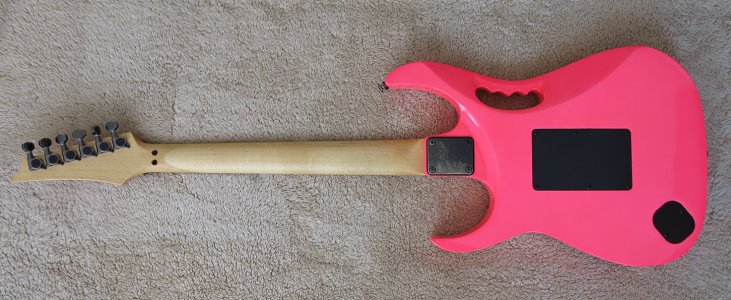PatrikKl said:
I was wondering if maybe a quartersawn maple neck with a rw fretboard is a better choice for the basswood body, since it's heavier and brighter sounding than a regular maple neck. What do you guys think?
I wouldn't spend the money for a quartersawn Maple neck unless there's some aspect of its appearance that appeals to you. Flatsawn or riftsawn Maple will sound the same. The advantage of a quartersawn neck is a lower incidence of physical distortion (warping/twisting), which happens very rarely on properly dried/finished Maple necks anyway, particularly on Warmoth "Pro" series parts. The "Pro" series necks are so stable, it's pretty much a "set it and forget it" setup no matter where you live.
The disadvantage of Maple necks is that even if they're quartersawn, they still generally require a hard finish, unless you're the gambling type. That not only costs money, it doesn't feel that great, relatively speaking. On the other hand, a properly burnished raw Maple neck feels like the finest silk you can imagine and there's no finish to discolor, change texture, crack, chip, etc.
There are two ways to get away from that. One, is to use Canary. Sounds very much the same, burnishes up like magic, and is very stable even without a finish. The other is to use "roasted" Maple, which is the same way but is a substantially lighter weight. Also doesn't need a finish, and burnishes up even better. Stuff is so slick afterward that you'd swear it's been treated with Teflon or something.
Add some stainless frets to that, and you've got a neck like you've never played before. Don't pay any attention to those who say stainless frets sound different. Chances are real good they've never played them and are just repeating misguided opinions they've heard from others who've never played them. Stainless frets don't change tone and are
the whip!. They should be standard on
all necks. The only downside to them is there are still a LOT of luthiers/techs out there that will charge anywhere from 50% to 100% more to set up a stainless fretted neck because their tools wear too quickly and there's some extra time involved. Fortunately, there are those of us who know better and buy good tools. Once you've had a neck with stainless frets, you'll never go back. They're super-slick and last forever.




